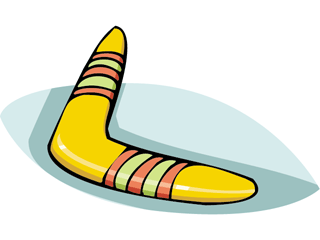DEBUNKING A MYTH

In the field of computer networking, the term “load balancing” often refers to a technique usually performed by software to spread work evenly among computer processors. In the world of interlibrary loan (ILL), load balancing has come to mean “the process by which a load of borrow requests is spread among viable lenders.”
No attempt to apply load balancing may be found in DOCLINE, yet many participants think that it exists. Why is that?
Perhaps a stroll down memory lane — or regional library history — is in order:
In June 1986, a health sciences library consortium emerged, the Basic Health Sciences Library Network (BHSL, pronounced “bissel”), to promote free reciprocal lending among its members. This consortium grew rapidly to include members from the northeastern corridor (that is, states that make up today’s Middle Atlantic and New England Regions). The group established a hierarchical structure of 8 levels to address calls for parity and fairness in lending which, in turn, resulted with an improvised system of load balancing: BHSL Coordinators in each state assigned levels to individual members based on their ILL statistics for the preceding 12 months. Members then engaged in lending to other members within their level or below. Levels were also displayed with an asterisk and a number following the Institution Name in the member’s DOCLINE Institution Record. By all accounts, this load balancing system worked reasonably well.
All that changed, however, in February, 2007, with the release of DOCLINE® 2.7 and NLM’s introduction of new functionality that allowed the entry of library groups directly into the DOCLINE Routing Table. On the one hand, the enhancement was hailed as a positive development, one that promised less routine table maintenance for system participants. On the other hand, introduction of the revised software resulted in the consequential removal of BHSL’s level hierarchy – along with their improvised system of load balancing. Today, BHSL remains a sizeable library group within DOCLINE of close to 400 members, eclipsed in size only by FreeShare (the Free Reciprocal Interlibrary Loan Group), which has a membership of close to 1,500 members!
So for the record: load balancing never was a feature of DOCLINE, either before or after the removal of the BHSL hierarchy. Granted, load balancing remains fresh in the minds of many BHSL participants that became accustomed with the concept, but it is the ghost image of a BHSL practice long gone … for better or for worse.
Now some folks may be wondering: if functionally DOCLINE doesn’t use load balancing, what is at play with routing requests? In a word: randomization.
The routing algorithms of DOCLINE are predicated on the science of randomization. Randomization may be defined as …“a deliberately haphazard arrangement so as to simulate chance”. When a borrow request works its way through the DOCLINE system, an internal algorithm checks for potential lenders that meet certain criteria, as defined in the Boolean string:
((PREFERRED DELIVERY METHOD AND (TITLE+VOLUME) OR (TITLE+YEAR))
Twenty “potential lenders” are then placed into a “pool” for one-by-one selection. A “match” program randomly selects a potential lender from the available pool and routes the borrow request. If the lender either: (a.) fails to “receipt” the request within 24 hours; or (b.) is unable to fill the request within 72 hours, the request is then re-routed to the next potential lender from the amassed pool of potential lenders. The same logic is employed for routing within library groups.
To be sure, there will be times when a borrower thinks they see an emerging pattern. Or maybe they begin to think something has gone horribly wrong with the system. Or maybe they’ll stop and wonder: “how come we end up with all these requests from the same library, without even a ‘prefix’?” But don’t get fooled! – it all comes back to chance and randomization. For the universe as well as DOCLINE.



